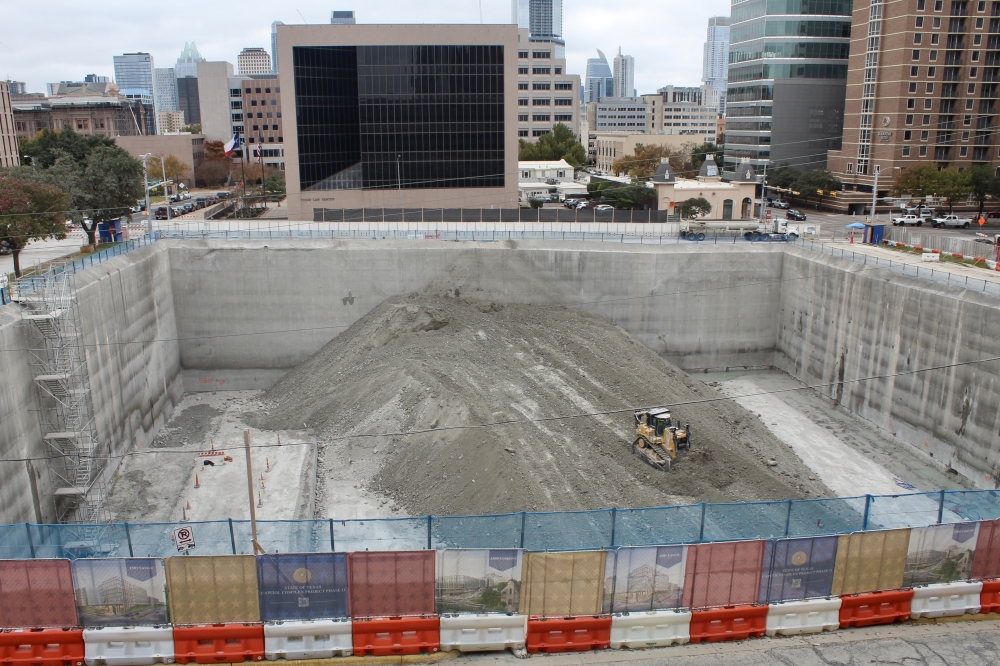The Texas Facilities Commission and its contractors broke ground on the second phase of the Texas Capitol Complex Project in April. Contractors are constructing two new buildings with underground parking for state employees and expanding an outdoor pedestrian mall.
The backstory
The state currently spends over $37 million annually to house around 7,500 state employees in leased buildings across Austin, according to the TFC.
Across several legislative sessions, state lawmakers approved over $1.1 billion to move state agencies into centralized buildings next to the Texas state Capitol. The project, which began in 2016, includes three phases.
“Having all of the state agencies in close proximity allows for collaboration across agencies,” TFC communications specialist Francoise Luca said. “It makes it a lot easier for meetings and for the public to do business with the state instead of going to different parts of the city to conduct whatever business they have with the state.”
Luca said state officials planned for future population growth when creating the Capitol Complex Project.
“State government grows as the population of the state grows,” Luca told Community Impact. “There’s more drivers licenses, there’s more permits ... so there is some growth in employee count to support the services that citizens expect.”
Crews built the Barbara Jordan and George H.W. Bush buildings during Phase 1, which ended in 2022. The buildings host over two dozen state agencies and have free underground parking for employees.
State employees can access a child care center, cafeterias, a conference center, workout areas, locker rooms and more in the two new buildings. The new buildings are already 96% occupied, Luca said.
Austinites can also visit the Capitol Mall, a three-block pedestrian space that extends from 16th Street to Martin Luther King Jr. Boulevard. The mall, which is connected to The University of Texas-Austin’s Blanton Museum across the street, has paved paths running north and south, with an open green space in between.
A fourth block of the Capitol Mall, from 15th to 16th streets, will be completed during Phase 2 of the project.

During Phase 2, crews will construct a five-story building at 1500 Congress Ave., which will house the Texas Department of Public Safety and other state agencies. They are also working on an eight-story building at 1501 Lavaca St.
The two buildings will be accompanied by roughly 2,550 parking spaces in above- and underground garages, which will be free for state employees. Contractors are scheduled to complete the buildings in late 2026, and agencies can begin moving in in 2027.
The new state office buildings are made out of sunset red granite, the same material used to build the Texas state Capitol in the 1880s. The granite, which comes from Granite Mountain in nearby Marble Falls, gives the Capitol its pink appearance.

In 2019, the Texas Legislature approved the sale of the William P. Hobby Jr. State Office Building, located at 333 Guadalupe St.
The building, which is near the Capitol, will be transformed into a mixed-use development with workforce housing, child care, parking and a retail space, Austin Mayor Kirk Watson and Texas Land Commissioner Dawn Buckingham announced Aug. 15.
Watson, a former state senator, said the sale was meant to improve working conditions for state employees “who were serving the people of Texas every day in a dilapidated, rat-infested building” and benefit the city of Austin by making the property available.





